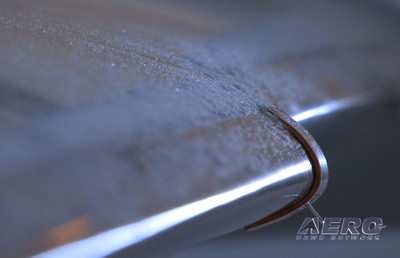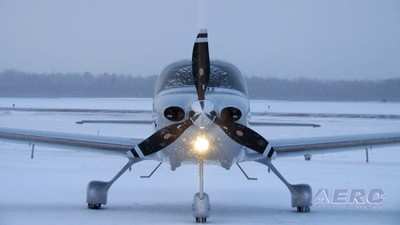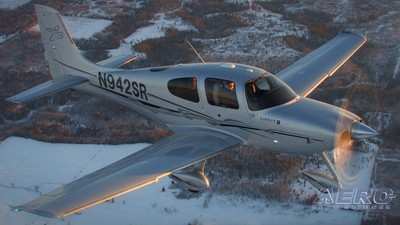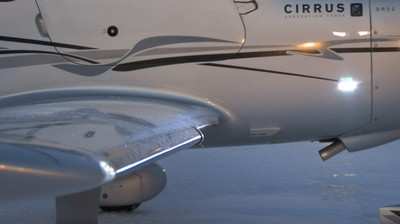Just In Time For European Winters
 EASA has approved Cirrus Aircraft's Known Ice Protection system
for FIKI operations. Earlier this year, FAA approval was granted
and new aircraft equipped with the optional system - both normally
aspirated and TURBO piston aircraft - have been shipping to
customers since January of 2009.
EASA has approved Cirrus Aircraft's Known Ice Protection system
for FIKI operations. Earlier this year, FAA approval was granted
and new aircraft equipped with the optional system - both normally
aspirated and TURBO piston aircraft - have been shipping to
customers since January of 2009.
Pat Waddick, Cirrus Aircraft Executive Vice President and Chief
Operating Officer, noted the importance of flight into known icing
capability to customers globally and the innovation in the design
of the new Cirrus system.
"Reliable, safe and efficient personal transportation is the
hallmark of Cirrus Aircraft. Proper training and good
decision-making are always essential for flight safety, and now
with Cirrus Known Ice Protection, flying on marginal weather days
or when icing forecasts might otherwise preclude travel are now
possible. This robust system separates Cirrus Aircraft from others
when it comes to getting the most capability for your personal
aircraft investment."
The Cirrus Known Ice Protection system - allowing flight into
known icing (FIKI) - utilizes the TKS weeping wing technology in
laser-drilled panels on the leading edges of the wings, horizontal
and vertical tail surfaces and the elevator horns. New
high-intensity LED ice lights on both sides of the airplane
illuminate the wing's leading edges and tail surfaces through a
unique prism lens. An automotive style nozzle distributes TKS fluid
evenly onto the windshield and a traditional slinger-ring provides
ice protection on the propeller.

The pilot interface is equally as innovative as the Cirrus Known
Ice Protection system seamlessly integrates with Cirrus Perspective
by Garmin avionics on 12-inch screens by displaying key operating
and system status information on the multi-function display (MFD)
including protection system range and endurance. The TKS fluid
capacity is up to a maximum of 8 gallons and various pilot selected
flow rates allow de-icing fluid flow for up to 2.5 hours.

Ian Bentley, Vice President and Managing Director -
International Sales commented, "This is likely the most extensively
tested known ice protection package ever developed for general
aviation. The certification program had the same icing envelope and
followed similar testing protocols as business jets and airliners
under FAR Part 25. Customers ordering new aircraft in 2009 have
shown a very strong preference for the Cirrus Known Ice Protection
option."

Bentley also added a word of caution, "As capable as the system
is, Cirrus Known Ice Protection does not create an 'all weather'
airplane - a perhaps overused term in aviation. Even airliners,
military and corporate aircraft cancel flights for weather -
particularly winter weather. A broad knowledge of weather
operations, recurrent training and flight experience in your Cirrus
is always necessary."

Cirrus now offers additional support for pilots with an on-line
"Icing Awareness" training program focused on the Cirrus Known Ice
Protection equipped aircraft. This training is required for all
Cirrus pilots prior to flying into forecast or known icing
conditions and recommended for all pilots.
 ANN's Daily Aero-Term (12.08.25): Decision Altitude (DA)
ANN's Daily Aero-Term (12.08.25): Decision Altitude (DA) ANN's Daily Aero-Linx (12.08.25)
ANN's Daily Aero-Linx (12.08.25) NTSB Final Report: Piper PA-31T3
NTSB Final Report: Piper PA-31T3 Aero-News: Quote of the Day (12.08.25)
Aero-News: Quote of the Day (12.08.25) Airborne-Flight Training 12.04.25: Ldg Fee Danger, Av Mental Health, PC-7 MKX
Airborne-Flight Training 12.04.25: Ldg Fee Danger, Av Mental Health, PC-7 MKX







